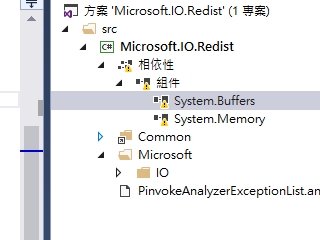可以将文章内容翻译成中文,广告屏蔽插件可能会导致该功能失效(如失效,请关闭广告屏蔽插件后再试):
问题:
I'd like to automatically kill a command after a certain amount of time. I have in mind an interface like this:
% constrain 300 ./foo args
Which would run "./foo" with "args" but automatically kill it if it's still running after 5 minutes.
It might be useful to generalize the idea to other constraints, such as autokilling a process if it uses too much memory.
Are there any existing tools that do that, or has anyone written such a thing?
ADDED: Jonathan's solution is precisely what I had in mind and it works like a charm on linux, but I can't get it to work on Mac OSX. I got rid of the SIGRTMIN which lets it compile fine, but the signal just doesn't get sent to the child process. Anyone know how to make this work on Mac?
[Added: Note that an update is available from Jonathan that works on Mac and elsewhere.]
回答1:
I've arrived rather late to this party, but I don't see my favorite trick listed in the answers.
Under *NIX, an alarm(2) is inherited across an execve(2) and SIGALRM is fatal by default. So, you can often simply:
$ doalarm () { perl -e 'alarm shift; exec @ARGV' "$@"; } # define a helper function
$ doalarm 300 ./foo.sh args
or install a trivial C wrapper to do that for you.
Advantages Only one PID is involved, and the mechanism is simple. You won't kill the wrong process if, for example, ./foo.sh exited "too quickly" and its PID was re-used. You don't need several shell subprocesses working in concert, which can be done correctly but is rather race-prone.
Disadvantages The time-constrained process cannot manipulate its alarm clock (e.g., alarm(2), ualarm(2), setitimer(2)), since this would likely clear the inherited alarm. Obviously, neither can it block or ignore SIGALRM, though the same can be said of SIGINT, SIGTERM, etc. for some other approaches.
Some (very old, I think) systems implement sleep(2) in terms of alarm(2), and, even today, some programmers use alarm(2) as a crude internal timeout mechanism for I/O and other operations. In my experience, however, this technique is applicable to the vast majority of processes you want to time limit.
回答2:
GNU Coreutils includes the timeout command, installed by default on many systems.
https://www.gnu.org/software/coreutils/manual/html_node/timeout-invocation.html
To watch free -m for one minute, then kill it by sending a TERM signal:
timeout 1m watch free -m
回答3:
Maybe I'm not understanding the question, but this sounds doable directly, at least in bash:
( /path/to/slow command with options ) & sleep 5 ; kill $!
This runs the first command, inside the parenthesis, for five seconds, and then kills it. The entire operation runs synchronously, i.e. you won't be able to use your shell while it is busy waiting for the slow command. If that is not what you wanted, it should be possible to add another &.
The $! variable is a Bash builtin that contains the process ID of the most recently started subshell. It is important to not have the & inside the parenthesis, doing it that way loses the process ID.
回答4:
I have a program called timeout that does that - written in C, originally in 1989 but updated periodically since then.
Update: this code fails to compile on MacOS X because SIGRTMIN is not defined, and fails to timeout when run on MacOS X because the
signal() function there resumes the
wait() after the alarm times out - which is not the required behaviour. I have a new version of
timeout.c which deals with both these problems (using
sigaction() instead of
signal()). As before, contact me for a 10K gzipped tar file with the source code and a manual page (see my profile).
/*
@(#)File: $RCSfile: timeout.c,v $
@(#)Version: $Revision: 4.6 $
@(#)Last changed: $Date: 2007/03/01 22:23:02 $
@(#)Purpose: Run command with timeout monitor
@(#)Author: J Leffler
@(#)Copyright: (C) JLSS 1989,1997,2003,2005-07
*/
#define _POSIX_SOURCE /* Enable kill() in <unistd.h> on Solaris 7 */
#define _XOPEN_SOURCE 500
#include <stdio.h>
#include <stdlib.h>
#include <signal.h>
#include <errno.h>
#include <unistd.h>
#include <sys/types.h>
#include <sys/wait.h>
#include "stderr.h"
#define CHILD 0
#define FORKFAIL -1
static const char usestr[] = "[-vV] -t time [-s signal] cmd [arg ...]";
#ifndef lint
/* Prevent over-aggressive optimizers from eliminating ID string */
const char jlss_id_timeout_c[] = "@(#)$Id: timeout.c,v 4.6 2007/03/01 22:23:02 jleffler Exp $";
#endif /* lint */
static void catcher(int signum)
{
return;
}
int main(int argc, char **argv)
{
pid_t pid;
int tm_out;
int kill_signal;
pid_t corpse;
int status;
int opt;
int vflag = 0;
err_setarg0(argv[0]);
opterr = 0;
tm_out = 0;
kill_signal = SIGTERM;
while ((opt = getopt(argc, argv, "vVt:s:")) != -1)
{
switch(opt)
{
case 'V':
err_version("TIMEOUT", &"@(#)$Revision: 4.6 $ ($Date: 2007/03/01 22:23:02 $)"[4]);
break;
case 's':
kill_signal = atoi(optarg);
if (kill_signal <= 0 || kill_signal >= SIGRTMIN)
err_error("signal number must be between 1 and %d\n", SIGRTMIN - 1);
break;
case 't':
tm_out = atoi(optarg);
if (tm_out <= 0)
err_error("time must be greater than zero (%s)\n", optarg);
break;
case 'v':
vflag = 1;
break;
default:
err_usage(usestr);
break;
}
}
if (optind >= argc || tm_out == 0)
err_usage(usestr);
if ((pid = fork()) == FORKFAIL)
err_syserr("failed to fork\n");
else if (pid == CHILD)
{
execvp(argv[optind], &argv[optind]);
err_syserr("failed to exec command %s\n", argv[optind]);
}
/* Must be parent -- wait for child to die */
if (vflag)
err_remark("time %d, signal %d, child PID %u\n", tm_out, kill_signal, (unsigned)pid);
signal(SIGALRM, catcher);
alarm((unsigned int)tm_out);
while ((corpse = wait(&status)) != pid && errno != ECHILD)
{
if (errno == EINTR)
{
/* Timed out -- kill child */
if (vflag)
err_remark("timed out - send signal %d to process %d\n", (int)kill_signal, (int)pid);
if (kill(pid, kill_signal) != 0)
err_syserr("sending signal %d to PID %d - ", kill_signal, pid);
corpse = wait(&status);
break;
}
}
alarm(0);
if (vflag)
{
if (corpse == (pid_t) -1)
err_syserr("no valid PID from waiting - ");
else
err_remark("child PID %u status 0x%04X\n", (unsigned)corpse, (unsigned)status);
}
if (corpse != pid)
status = 2; /* Dunno what happened! */
else if (WIFEXITED(status))
status = WEXITSTATUS(status);
else if (WIFSIGNALED(status))
status = WTERMSIG(status);
else
status = 2; /* Dunno what happened! */
return(status);
}
If you want the 'official' code for 'stderr.h' and 'stderr.c', contact me (see my profile).
回答5:
There is also ulimit, which can be used to limit the execution time available to sub-processes.
ulimit -t 10
Limits the process to 10 seconds of CPU time.
To actually use it to limit a new process, rather than the current process, you may wish to use a wrapper script:
#! /usr/bin/env python
import os
os.system("ulimit -t 10; other-command-here")
other-command can be any tool. I was running a Java, Python, C and Scheme versions of different sorting algorithms, and logging how long they took, whilst limiting execution time to 30 seconds. A Cocoa-Python application generated the various command lines - including the arguments - and collated the times into a CSV file, but it was really just fluff on top of the command provided above.
回答6:
Perl one liner, just for kicks:
perl -e '$s = shift; $SIG{ALRM} = sub { print STDERR "Timeout!\n"; kill INT => $p }; exec(@ARGV) unless $p = fork; alarm $s; waitpid $p, 0' 10 yes foo
This prints 'foo' for ten seconds, then times out. Replace '10' with any number of seconds, and 'yes foo' with any command.
回答7:
The timeout command from Ubuntu/Debian when compiled from source to work on the Mac. Darwin
10.4.*
http://packages.ubuntu.com/lucid/timeout
回答8:
My variation on the perl one-liner gives you the exit status without mucking with fork() and wait() and without the risk of killing the wrong process:
#!/bin/sh
# Usage: timelimit.sh secs cmd [ arg ... ]
exec perl -MPOSIX -e '$SIG{ALRM} = sub { print "timeout: @ARGV\n"; kill(SIGTERM, -$$); }; alarm shift; $exit = system @ARGV; exit(WIFEXITED($exit) ? WEXITSTATUS($exit) : WTERMSIG($exit));' "$@"
Basically the fork() and wait() are hidden inside system(). The SIGALRM is delivered to the parent process which then kills itself and its child by sending SIGTERM to the whole process group (-$$). In the unlikely event that the child exits and the child's pid gets reused before the kill() occurs, this will NOT kill the wrong process because the new process with the old child's pid will not be in the same process group of the parent perl process.
As an added benefit, the script also exits with what is probably the correct exit status.
回答9:
Try something like:
# This function is called with a timeout (in seconds) and a pid.
# After the timeout expires, if the process still exists, it attempts
# to kill it.
function timeout() {
sleep $1
# kill -0 tests whether the process exists
if kill -0 $2 > /dev/null 2>&1 ; then
echo "killing process $2"
kill $2 > /dev/null 2>&1
else
echo "process $2 already completed"
fi
}
<your command> &
cpid=$!
timeout 3 $cpid
wait $cpid > /dev/null 2>&
exit $?
It has the downside that if your process' pid is reused within the timeout, it may kill the wrong process. This is highly unlikely, but you may be starting 20000+ processes per second. This could be fixed.
回答10:
I use "timelimit", which is a package available in the debian repository.
http://devel.ringlet.net/sysutils/timelimit/
回答11:
#!/bin/sh
( some_slow_task ) & pid=$!
( sleep $TIMEOUT && kill -HUP $pid ) 2>/dev/null & watcher=$!
wait $pid 2>/dev/null && pkill -HUP -P $watcher
The watcher kills the slow task after given timeout; the script waits for the slow task and terminates the watcher.
Examples:
- The slow task run more than 2 sec and was terminated
Slow task interrupted
( sleep 20 ) & pid=$!
( sleep 2 && kill -HUP $pid ) 2>/dev/null & watcher=$!
if wait $pid 2>/dev/null; then
echo "Slow task finished"
pkill -HUP -P $watcher
wait $watcher
else
echo "Slow task interrupted"
fi
- This slow task finished before the given timeout
Slow task finished
( sleep 2 ) & pid=$!
( sleep 20 && kill -HUP $pid ) 2>/dev/null & watcher=$!
if wait $pid 2>/dev/null; then
echo "Slow task finished"
pkill -HUP -P $watcher
wait $watcher
else
echo "Slow task interrupted"
fi
回答12:
A slight modification of the perl one-liner will get the exit status right.
perl -e '$s = shift; $SIG{ALRM} = sub { print STDERR "Timeout!\n"; kill INT => $p; exit 77 }; exec(@ARGV) unless $p = fork; alarm $s; waitpid $p, 0; exit ($? >> 8)' 10 yes foo
Basically, exit ($? >> 8) will forward the exit status of the subprocess. I just chose 77 at the exit status for timeout.
回答13:
How about using the expect tool?
## run a command, aborting if timeout exceeded, e.g. timed-run 20 CMD ARGS ...
timed-run() {
# timeout in seconds
local tmout="$1"
shift
env CMD_TIMEOUT="$tmout" expect -f - "$@" <<"EOF"
# expect script follows
eval spawn -noecho $argv
set timeout $env(CMD_TIMEOUT)
expect {
timeout {
send_error "error: operation timed out\n"
exit 1
}
eof
}
EOF
}
回答14:
pure bash:
#!/bin/bash
if [[ $# < 2 ]]; then
echo "Usage: $0 timeout cmd [options]"
exit 1
fi
TIMEOUT="$1"
shift
BOSSPID=$$
(
sleep $TIMEOUT
kill -9 -$BOSSPID
)&
TIMERPID=$!
trap "kill -9 $TIMERPID" EXIT
eval "$@"
回答15:
Isn't there a way to set a specific time with "at" to do this?
$ at 05:00 PM kill -9 $pid
Seems a lot simpler.
If you don't know what the pid number is going to be, I assume there's a way to script reading it with ps aux and grep, but not sure how to implement that.
$ | grep someprogram
tony 11585 0.0 0.0 3116 720 pts/1 S+ 11:39 0:00 grep someprogram
tony 22532 0.0 0.9 27344 14136 ? S Aug25 1:23 someprogram
Your script would have to read the pid and assign it a variable.
I'm not overly skilled, but assume this is doable.



